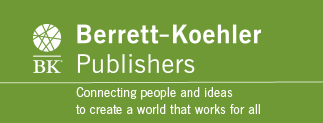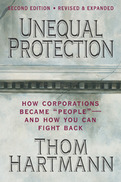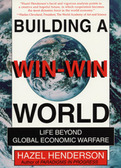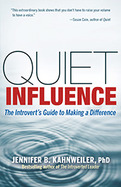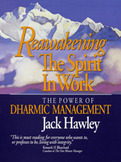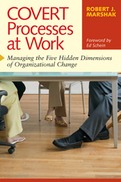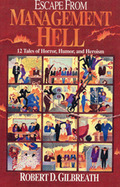2010
- Explores current economic trends in search of ways to accelerate human development that are sustainable within the earth's ecosystems
- Examines how social innovations are finding expression in new forms of enterprise, new institutions, partnerships, and cooperative agreements that can lead to the building of a win-win world
- Offers positive approaches for concerned citizens who accept that personal development and rights bring a greater responsibility for the human family
2013
- The first book to identify six unique strengths that can make introverts powerful influencers
- Includes quizzes, exercises, and worksheets for putting quiet influencer methods into practice on a daily basis
- Features interviews with and examples of real-life quiet influencers
- For press release, click here
- Companion online product: Quiet Influence Quotient (QIQ) Self-Assessment
Introverts may feel powerless in a world where extroverts seem to rule, but theres more than one way to have some sway. As Jennifer Kahnweiler proves in this much-needed book, introverts can be highly effective influencers when, instead of trying to act like extroverts, they use their natural strengths. Kahnweiler shows how you can use those strengths to challenge the status quo, provoke new ways of thinking, effect change, and inspire others to move forward.
Kahnweiler identifies six unique strengths introverts have:
- Taking Quiet Time: The periods of solitude that introverts crave provide them with a powerful source of creativity and self-awareness.
- Preparation: Careful preparation, which makes introverts feel more comfortable, also makes them very knowledgeable and able to anticipate objections.
- Writing: Introverts preference for writing over speaking enables them to influence others through deep, authentic, well-developed arguments.
- Engaged Listening: Introverts are great listenerstheyd rather listen than talkwhich is a crucial skill for establishing rapport and mutual understanding.
- Focused Conversation: Introverts dont like small talk, but they excel at the serious, purpose-driven, one-on-one interactions vital for winning people over.
- Thoughtful Use of Social Media: Oversharing doesnt appeal to introverts online any more than it does offline, so they naturally use social media in a thoughtful, and more effective, way.
Kahnweiler includes a Quiet Influence Quotient quiz to measure how well youre using these six strengths now. Then, through questions, tools, exercises, and real-world examples, she helps you increase your mastery of these strengths. Quiet Influence is the must-have guide to deeper insight and greater impact that introverts have been waiting for and that extroverts can learn from.
- Find out more at www.gitawalkthrough.com
"The key questions for today's managers and leaders," writes Jack Hawley, "are no longer issues of task and structure, but questions of spirit." Not only do we all yearn for spiritually rooted qualities at work, those very qualities-integrity, character, love, inspiration, faith, reverence-are key factors in an enterprise's success.
Through real-life examples, Hawley shows how people can create improved workplaces and more resilient, effective, and successful organizations. He shows how leaders and managers who are motivated by a spiritual vision will liberate the best in people, and explains why all leadership is spiritual.
Hawley offers examples of people actually living by their inner truth at work, and shows how such people can create an improved place to work and a more resilient, effective organization.
- Find out more at www.gitawalkthrough.com
- The first book to offer an integrated approach for recognizing and dealing with the hidden processes that sabotage organizational change efforts
- Identifies five different dimensions of these covert processes
- Offers a comprehensive approach that can be used to address any type of covert process
As the story opens one snowy afternoon, a commuter jet carrying twelve executives fresh from an exclusive "leadership conference" crashes in the mountains near a Colorado ski resort. Out of the wreckage stagger the twelve VIP's, suddenly finding themselves chained together. Scattered among them are real estate speculators, airline tycoons, CFO's, backstabbers, frauds, yes-men, influence peddlers, liars, and double-crossers. Orange and red lights jump and flash to their sides. Hissing sounds like ventilated steam sigh from the cavernous roof. Decay is in the air. And death. And doom. Despair comes once they realize where they are. And why. And what it will take to escape.
They are in Management Hell, facing Satan's Chief Operating Officer, Reflecto, who lays down the rules: "You know budgets and prices and costs. You know chains of command and spans of control. You know how to put a positive spin on a disastrous project, how to doll up an annual report to make a stupid investment seem brilliant! But you are here because you lack management wisdom! Your shortsightedness, your greed, your well-intentioned management styles and your tried and true techniques just don't cut it anymore!
"To escape, to leave this inferno, you must amuse me and my boss. Each in a different way. You must teach us of your errors and triumphs, enlighten our feeble devil minds, if you will. You must impart management wisdom to us.
"You must compose meaningful, entertaining, perhaps even amusing stories. Stories that demonstrate the folly and futility of your individual sins! Stories that repudiate your errors. If every story pleases Satan, if he learns enduring lessons from each, you shall all be allowed to leave. That is how you escape from Management Hell!"
Management Hell looks a lot like the organizations that people work in today. It's a place of rapidly increasing demands on productivity, fewer resources, and greater ethical dilemmas than ever before. Robert Gilbreath offers readers a way to escape this hellish territory. Twelve tales of horror, humor, and heroism help us make sense of the madness of modern management and to find our way out of age-old managerial dilemmas.
Gilbreath's premise-twelve modern executives marooned in hell, faced with the task of defending themselves to the devil by telling stories that expose the folly of their business practices-allows readers to step back from their normal daily grind and to see startling new perspectives that they may have been missing. The stories are set in exotic places-from ancient Rome to Easter Island-yet the characters and predicaments are familiar to everyone in business and management today.
These fascinating fables reflect encounters familiar to everyone in business and shatter common myths about innovation, leadership, control, and consensus building. Managers at every level can use the insights to transform the hell of modern management into resources for creativity, courage, and lasting change.
In twelve engaging stories, modern executives marooned in hell face the task of defending themselves to the devil by telling stories exposing the folly of their business practices. These stories offer readers a way to escape the hellish territory of today's organizations, and make sense of the madness of modern management.
